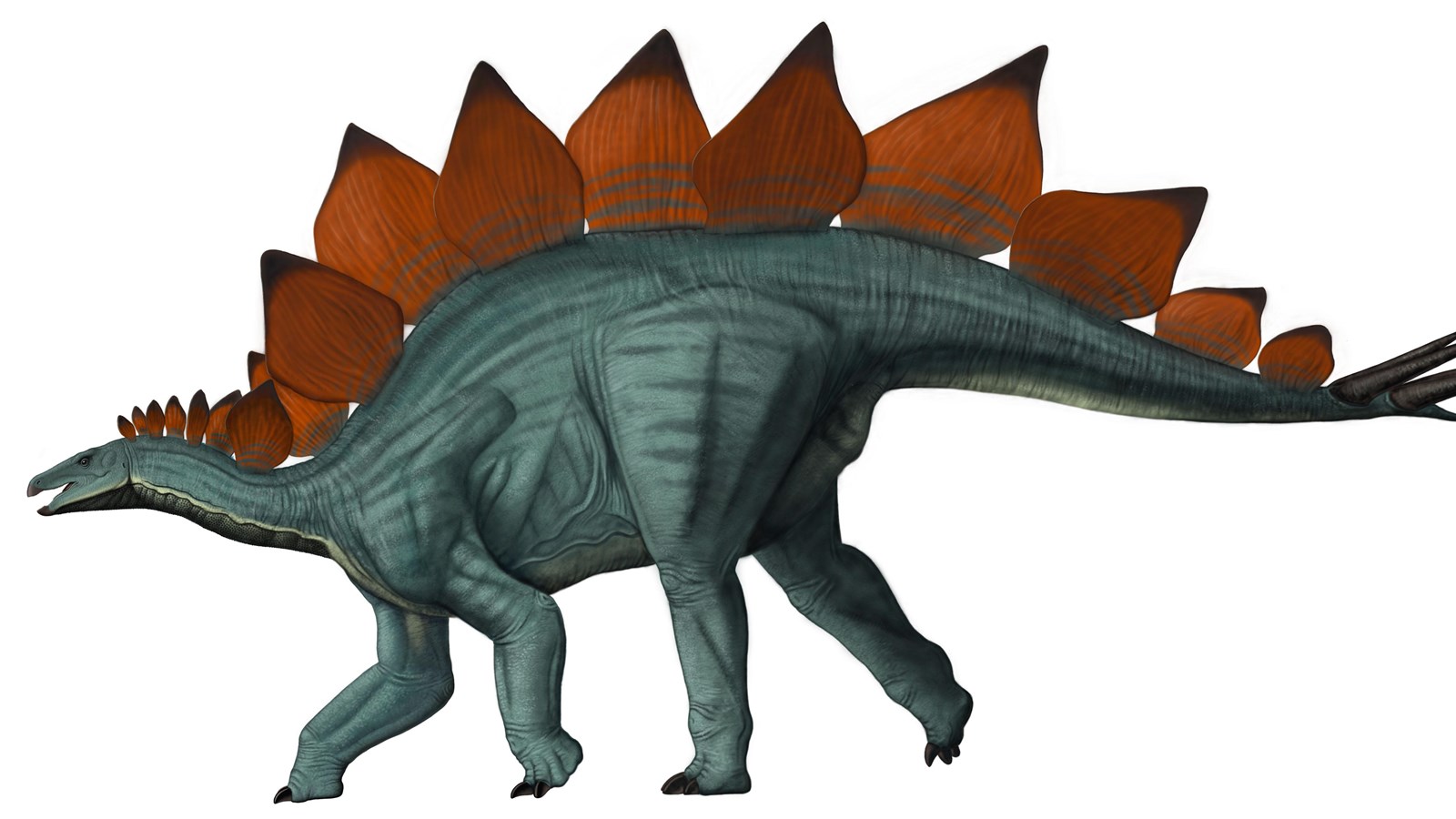Last updated: January 11, 2024
Place
Stegosaurus ungulates

NPS/Bob Walters Tess Kissinger
Quick Facts
Amenities
1 listed
Historical/Interpretive Information/Exhibits
Stegosaurus is a plant eating dinosaur with plates on its back and spikes on its tail. Stegosaurus ungulatus is a species of ornithischian dinosaur from the Late Jurassic of North America, found in the Morrison Formation. Stegosaurus means “roofed lizard,” a reference to its plates. The function of these plates has been debated by paleontologists. One theory is that the plates contained blood vessels, to help regulate body temperature. Another idea is the plates were used for display to attract mates, like colorful feathers on a bird or antlers on a deer. The plates also could have been used for protection from predators. Since the plates were not directly attached to the bones of the skeleton, they were easily separated from the body after death. Massive spikes on the end of its tail were used in defense against predators. At Dinosaur, many isolated plates and spikes have been found throughout the Carnegie Quarry.
Stegosaurus is one of the most easily recognized dinosaurs of the Jurassic. The plates on its back and spikes on its tail make it one of the most unique creatures of the Mesozoic (Age of Dinosaurs). The Carnegie Quarry is so rich in fossils that multiple skeletons have been mounted from early excavations at Dinosaur.
In 1977 paleontologists at Dinosaur National Monument removed a juvenile Stegosaurus from the Carnegie Quarry face. They found limb bones, shoulder blades, most of the hips, some ribs, and skull fragments. Since plates were not found, it is unknown if juveniles had them at all. However, these fossils make up the most complete juvenile Stegosaurus ever found. A mounted cast of the fragile bones ison display at the Quarry Exhibit Hall.
Stegosaurus is one of the most easily recognized dinosaurs of the Jurassic. The plates on its back and spikes on its tail make it one of the most unique creatures of the Mesozoic (Age of Dinosaurs). The Carnegie Quarry is so rich in fossils that multiple skeletons have been mounted from early excavations at Dinosaur.
In 1977 paleontologists at Dinosaur National Monument removed a juvenile Stegosaurus from the Carnegie Quarry face. They found limb bones, shoulder blades, most of the hips, some ribs, and skull fragments. Since plates were not found, it is unknown if juveniles had them at all. However, these fossils make up the most complete juvenile Stegosaurus ever found. A mounted cast of the fragile bones ison display at the Quarry Exhibit Hall.
